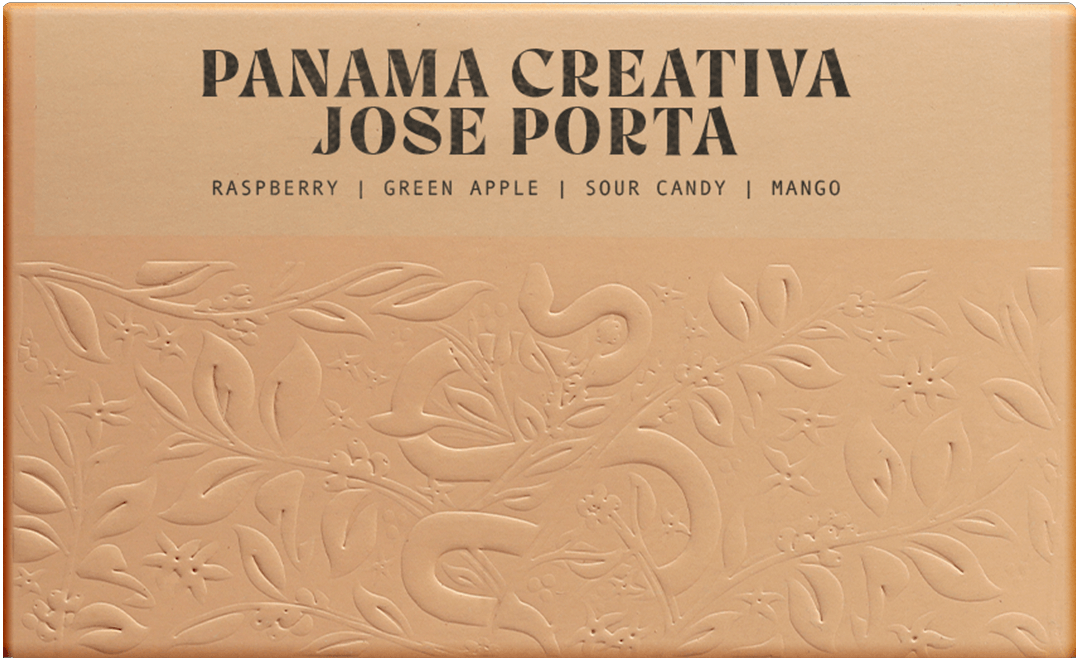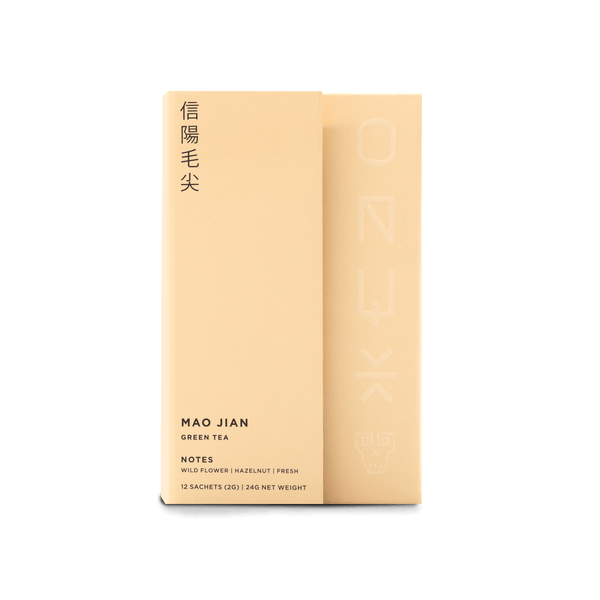Story
We first visited the Creativa Coffee District project early in 2018, just as our friends were in the beginning stages of renovating the massive wet mill. Located just outside of Boqute, this mill was once the largest mill in the area, with massive capabilities to process coffee by the container load. During that visit, we cupped some early lots that they had processed on site, and immediately saw the direction the project would go in. In the seasons since, we’ve purchased these wild and dynamic coffees with special projects in mind. Over four years since our first visit, we flew down to see the progress of the mill renovation and to cup the fresh crop offers. This lot stood out on the table with it’s dynamic acidity and markedly wild cup character. With notes of wine and tropical fruits, this coffee is decidedly not for the washed coffee lovers. We honed in on this offer from Creativa, knowing that it reflects what they are doing at their mill in Boquete. Much like the Neighbors & Crops program at La Palma y El Tucan, the folks at Equation have been purchasing cherry from neighbors of this mill in Panama and processing them onsite. They also provide agronomical support as well as picking support throughout the harvest. The team at Equation has done significant writing on this project, as well as providing deep dives on the processing methods they’ve developed at Creativa Coffee District.
Creativa Coffee District
Jose Porta is a 39-year-old producer located in the Chiriquí region of Panama. He manages La Alquiria estate, alongside fifteen committed full time employees. With 2 years of experience in the coffee industry, he proudly oversees his estate and collaborates closely with a team of 15 individuals during harvest, ensuring impeccable collection processes and effective implementations on the farm.
Spanning across 15 hectares of land, with 10 hectares allocated to coffee cultivation, over
30,000 trees flourish under his guidance. "LA ALQUERÍA" stands out for its diversity, harmoniously housing three coffee varieties: PACAMARA covers 50% of the plantation, with an average age of 3 years, CATUAl represents 25% with an average age of 2 years, and the energetic and youthful OBATA occupies the remaining 25%, averaging 11/2 years.
His journey into the coffee world began two years ago as a personal initiative. Although
he hasn't participated in local quality competitions, his dedication to continuous
improvement is evident in his meticulous soil studies and leaf analysis, aiming to optimize
Productivity. Like any entrepreneur, he's encountered challenges, particularly in marketing over the past two years due to low selling prices and high costs of protective inputs for crops. Despite these hurdles, his commitment to delivering high-quality coffee remains steadfast.
Creativa’s Processing Philosophy:
Creativa is a group of revolutionaries set to game the change in the coffee industry by weaving it together with the profound cultural impact of the world of contemporary art.
Art is a process that invokes change. Fermentation is our ART, and the mill is our canvas. We innovate with techniques that CHANGE the way we think about coffee, and how it is processed. Do you remember the old fashioned “fully washed”? Well, so do we. And this process can make some exceptional coffees. But, at Creativa, we believe that there is so much more. So, instead, we choose to work with controlled fermentation, slowly dried coffees, and other experimental processes that truly allow these unique coffee profiles to really stand out. That is what we bring to the specialty coffee market.
Our collaborating producers bring their beautifully ripe cherries to us at our mill, and our work begins. First, we make sure the quality is there. Average Brix levels of 18° and a pH above 4.5 is what we look for. After this, we assign the different batches to one of four fermentation methods. Each one is a carefully designed canvas that sets the stage for the cherries to become what they truly are – masterpieces.
DYNAMIC CHERRY
In this process, we lay the coffee onto the patio in thin layers (5cm) for two days before beginning the fermentation process in plastic bags. The average temperature of our patio is 32° celsius, and this serves to reduce moisture levels to such an extent that water is not available to promote bacteriological reactions, but enough to aid enzymatic reactions within the structure of the bean. In doing so, we minimize the risk of fungal developments on the cherry in these first crucial few days. The embryo continues to transform the sugars in the endosperm into less complex sugars, and thus the coffee cherry remains “alive” for much longer. This can extend the process considerably, the longest batch of the harvest this year was three weeks.
Drying
After the cherries have undergone their respective processes, we set them to dry either on raised beds or our patio. Not only the largest patio in Panama but also one that carries an immensely layered and cultural story. By continuing this legacy, we honor the past while looking to the future through the lens of creativity and innovation.
Our natural environment is scorching hot around harvest time. Believe it or not, on a hot summer day, our patio can reach up to 56º Celsius. It has been a big challenge to understand how to use the high temperatures of our environment to attain our quality standards. Yet in challenging one finds reward. The high ambient temperature of our patio works to halt the fermentation processes of each coffee once it’s reached its desired pH and Brix levels, adding another layer of consistency to our methods.
It is so hot in fact, the afternoon sun threatens to dry the cherry faster on one side than the other. To prevent this uneven drying, we move the cherry every two hours. Then, before night falls, we pile the coffee into small cherry mountains and cover them to prevent any risk of rain. In the morning, we spread them out and start it all again. The cycle continues for an average of 15 days.
For the batches that are dried on raised beds, we find ideal moisture levels after about 20 days. The beds are located in a climate-controlled room, which provides the option of increasing airflow. This ingenious development came to light toward the end of our 2020 harvest, just in time to host the last of our beautiful micro-lots. We are looking forward to learning more from this drying infrastructure during our upcoming harvest….
Dry Mill
Once our cherries reach 11% moisture level, they move from the patio and raised beds to begin the dry mill process.
We use our own dry mill facility in order to guarantee that our high-quality standards are upheld and our processing creativity shines all the way to the final cup. Our sorting equipment allows us to keep temperatures low by minimizing friction between the dried coffee and the machinery. The dried mucilage left on the cherries from our natural process is at risk of sticking when heated, which can cause a number of issues. By maintaining low temperatures, we ensure a smooth flow of coffee from start to finish.
Once the coffee is hulled, and the cherry skins are successfully removed, it is sorted by density. The dense beans pass onto the next step, while the lighter ones are separated, as they are often defective.
Next, the coffee is sorted by color. This is an additional step towards a quality export. The machine is calibrated regularly to ensure that our color specifications are met, as the creativity with our processes often imparts a reddish hue.
Then the coffee is ready for the last step. All of our coffees pass through a manual selection phase before being packaged for export. We enlist the help of the local indigenous community, the Ngäbe-Buglé, to oversee this critical process.
There’s a lot of work that goes into each batch of coffee we produce. Every single hand involved in this process is a passionate one. People who pour their passion and creativity into every detail are what moves us forward while innovating, changing, and improving along the way.





